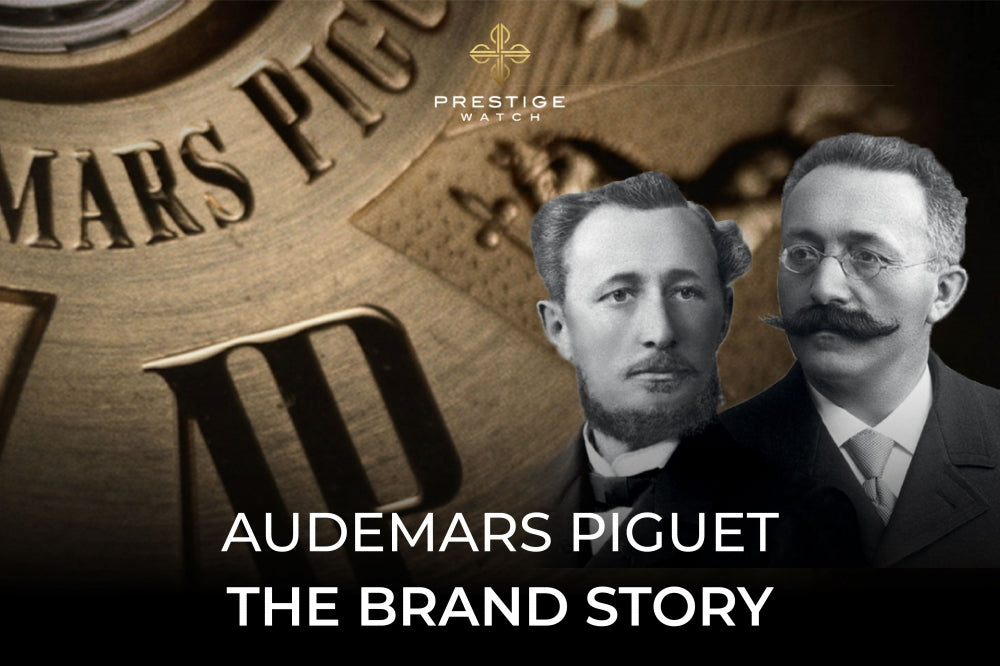History of Audemars Piguet
Two boyhood friends named Jules Louis Audemars and Edward Auguste Piguet formed Audemars Piguet in 1881. It's a popular misperception that "Audemars Piguet" is a first and last name, but it's actually a combination of the last names of the two men. After growing apart, the two buddies were able to reunite in their early 20s and found success through the founding of one of the greatest watch companies in the world.
The Vallée de Joux in Switzerland, a region that is known in the watchmaking industry, is where the company was established. The reason this location was chosen is due to this region having abundant access to natural resources like iron, which were and still are crucial to the manufacture of watches.
Jules Louis Audemars (1851–1918) and Edward Auguste Piguet (1853–1919)
When the company first began, both men had worked as watchmakers before; Audemars had previously designed watch movements for the Tiffany company, while Piguet was an expert in controlling watch movements. Audemars was talented in technical roles and could create intricate watch movements, so they decided to work together. He was therefore in charge of overseeing product development and production.
Meanwhile, Piguet was a repasser, meaning a master watchmaker who carried out the final adjustment of the timepiece. In the watch industry, this position was in high demand. So Piguet meticulously examined each finished movement part in their new business. In order to fix the flaws in the parts, he performed all necessary adjustments.
Piguet soon realised that he was even more adept at managing business-related tasks thus he took on sales, management, and marketing responsibilities. They successfully partnered in this manner. Over the course of their careers, they managed the business successfully together. The Piguet family is in charge of business operations and all financial-related things, whereas the Audemars family is in charge of technical matters. This division of labour is still in use today. .
The Royal Oak Concept
In commemoration of the 30th anniversary of the Royal Oak, Audemars Piguet unveiled this watch in 2002. It is a bold lab watch that embodies the future in both design and functionality. Because of its distinctive case and movement designs, this watch appears high yet is very light. A battery reserve indicator and a 50G shock resistance are just some of features offered by the watch. The dynamograph, a manually wound watch, was another novel feature that was introduced. The tension of the mainspring may be seen thanks to this function.
Despite the fact that Audemar Piguet first intended for the watch to be a limited edition, the company later made it part of a standard range. The most cutting-edge movements, patterns, and limited editions are showcased in this collection by Audemars Piguet.
Millenary
Another notable reference in Audemars Piguet history is the Millenary line. It was a watch produced in Audemars Piguet history to commemorate the millennium. The distinctive dial that is off-centre is one of the watch's key features. The business introduced the watch in 1995. This dial unveiled a wonderfully made skeletonized calibre. The lightweight movement of Millenary timepieces allows them to be worn comfortably despite its large size.
The response to this watch was apprehensive at first, but now it has become one of the company's most well-known products. To increase its consumer base, the firm has introduced new millennium models for ladies. Some designs came with elaborate embellishments including gem cabochon crows and bezels set with diamonds.
Final Thoughts
The company's history has shown how innovative changes from Audemars Piguet helped to shape the watch industry. By moving forward with many unique ideas, Audemars & Piguet watches are among the most sought-after timepieces by watch collectors, despite originally receiving cold receptions. The Royal Oak is this company's most well-known contribution to watchmaking history and their various landmarks of technical innovation can be seen all throughout Audemars Piguet's history.




